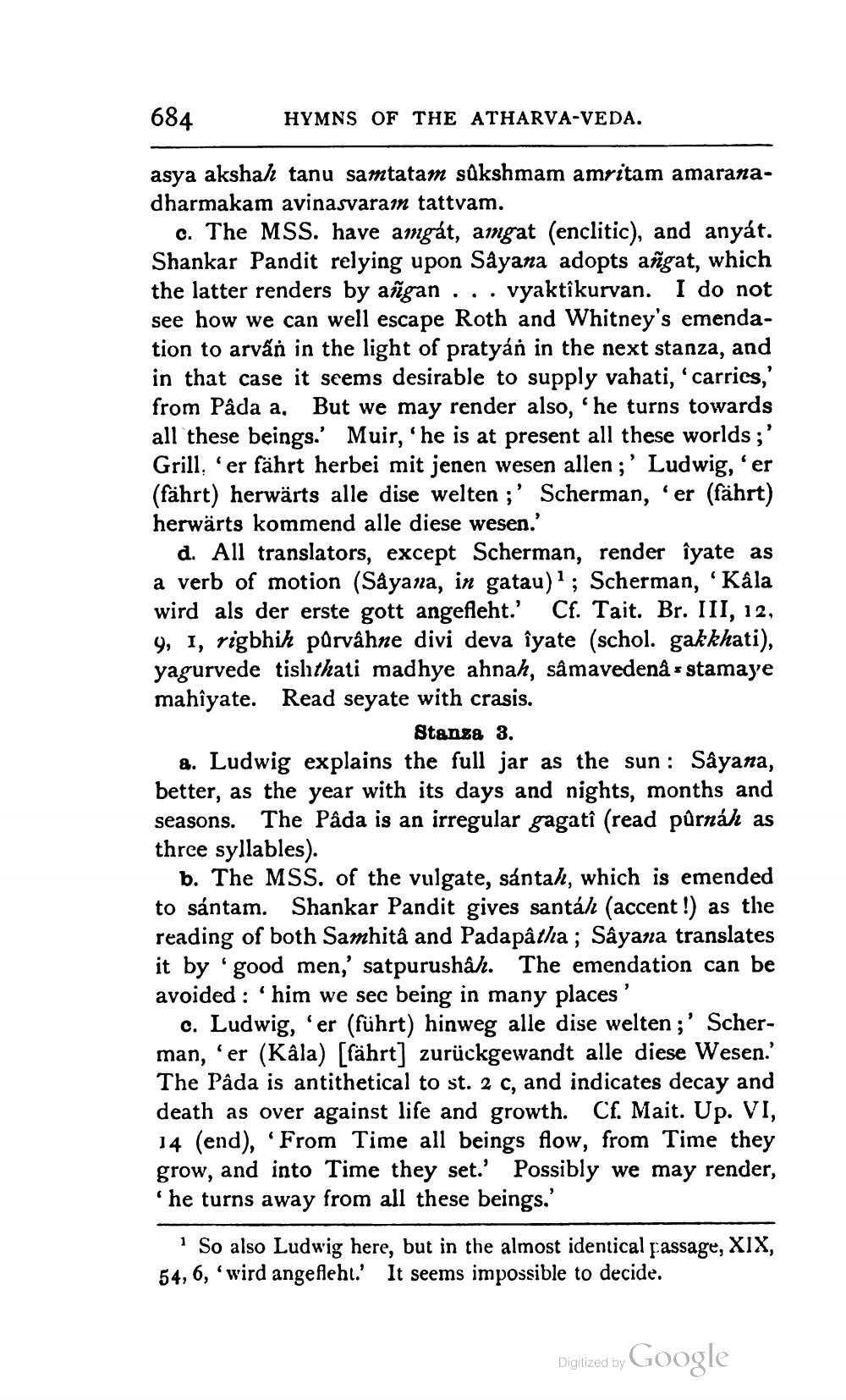________________
684
HYMNS OF THE ATHARVA-VEDA.
asya akshah tanu samtatam sūkshmam amritam amaranadharmakam avinasyaram tattvam.
c. The MSS. have amgát, amgat (enclitic), and anyát. Shankar Pandit relying upon Sâyana adopts añgat, which the latter renders by añgan ... vyaktîkurvan. I do not see how we can well escape Roth and Whitney's emendation to arván in the light of pratyán in the next stanza, and in that case it seems desirable to supply vahati, carrics,' from Pâda a. But we may render also, 'he turns towards all these beings.' Muir, 'he is at present all these worlds ;' Grill, 'er fährt herbei mit jenen wesen allen ;' Ludwig, 'er (fährt) herwärts alle dise welten ;' Scherman, 'er (fährt) herwärts kommend alle diese wesen.'
d. All translators, except Scherman, render îyate as a verb of motion (Sayana, in gatau); Scherman, 'Kala wird als der erste gott angefleht.' Cf. Tait. Br. III, 12, 9, I, rigbhih parvâhne divi deva îyate (schol. gakkhati), yagurvede tishthati madhye ahnah, sâmavedenås stamaye mahîyate. Read seyate with crasis.
Stanza 3. a. Ludwig explains the full jar as the sun: Sâyana, better, as the year with its days and nights, months and seasons. The Pâda is an irregular gagatî (read půrnáh as three syllables).
b. The MSS. of the vulgate, sántah, which is emended to sántam. Shankar Pandit gives santál (accent !) as the reading of both Samhita and Padapatha ; Sâyana translates it by 'good men,' satpurushâh. The emendation can be avoided : 'him we see being in many places'
c. Ludwig, 'er (führt) hinweg alle dise welten ;' Scherman, 'er (Kala) [fährt] zurückgewandt alle diese Wesen.' The Pâda is antithetical to st. 2 c, and indicates decay and death as over against life and growth. Cf. Mait. Up. VI, 14 (end), ‘From Time all beings flow, from Time they grow, and into Time they set.' Possibly we may render, 'he turns away from all these beings.'
So also Ludwig here, but in the almost identical passage, XIX, 54, 6, 'wird angefleht.' It seems impossible to decide.
Digized by Google




